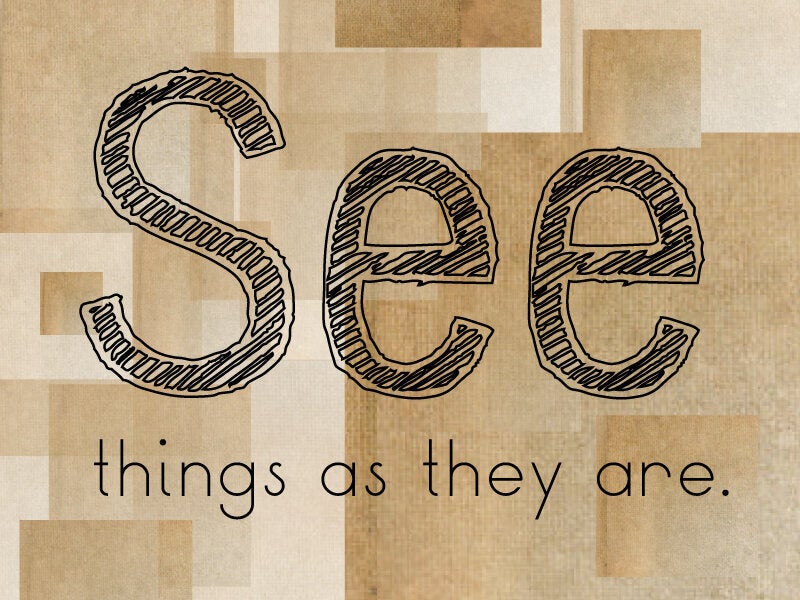Mindfulness – the art of focusing your attention to the present moment - is a way to develop peace and happiness in our lives according to Thich Nhat Hanh.
Hanh is a spiritual leader who has published more than 100 titles on meditation and mindfulness, and his most recent book – Silence – focuses on how to remain quiet in a world full of noise.

In the chapter “Mindfulness Means Reclaiming Attention”, Hanh discusses how to practice meditation through walking, encouraging those who believe they simply can’t do it, that in fact it’s really easy.
He gives guidance on how to focus when your mind is full of thoughts as well as showing how to meditate anytime and anywhere.
The following extract is taken from Thich Nhat Hanh's Silence:
Non-thinking is an art, and like any art, it requires patience and practice.
Reclaiming your attention and bringing your mind and body back together for even just ten breaths can be very difficult at first.
But with continued practice, you can reclaim your ability to be present and learn just to be.
Finding a few minutes to sit quietly is the easiest way to start training yourself to let go of your habitual thinking.
When you sit quietly, you can observe how your thoughts rush in, and you can practice not ruminating on them and instead let them just come and go as you focus on your breath and on the silence inside.
One woman I know decided she could never meditate because it just 'didn’t work."
So I asked her to take a walk with me.
I didn’t call it "walking meditation," but we walked slowly with awareness, enjoying the air and the feel of our feet on the ground.
When we came back, her eyes were bright and she seemed refreshed and clear.
If you can take just a few minutes for yourself to calm your body, your feelings, and your perceptions in this way, joy becomes possible.
Walking is a wonderful way to clear the mind without trying to clear the mind. You don’t say, "Now I am going to practice meditation!" or "Now I am going to not think!" You just walk, and while you’re focusing on the walking, joy and awareness come naturally.
In order to really enjoy the steps you make while walking, allow your mind to completely let go of any worry or plan. You don’t need to put in a lot of time and effort to prepare yourself to stop thinking. With one in-breath, you have already stopped. You breathe in, and you make a step.
In the beginning, you may need a little more time, maybe ten or 20 seconds of mindful breathing, before you can let your thinking go.
You can take one step with each in-breath and one step with each out breath. If your attention wanders, gently bring it back to your breathing.
Ten or 20 seconds is not a lot of time. One nerve impulse, one action potential, needs only a millisecond. If you want, you can give yourself even more time. In that short amount of time you can experience the bliss, the joy, the happiness of stopping.
During that time of stopping, your body is able to heal itself. Your mind also has the capacity to heal itself. There is nothing and no one to prevent you from continuing the joy you’ve produced with a second step, a second breath.
Your steps and your breath are always there to help you heal yourself.
SEE ALSO:
How Mindfulness Can Improve Your Mental Health
The Headspace Guide To A Mindful Pregnancy: Using Mindfulness When Trying For A Baby
As you’re walking, you may see your mind being pushed and pulled around by an old, ingrained habit energy of anger or craving.
Having recognised it, simply smile to it and give it a nice bath of mindfulness, of warm and spacious silence.
Silence doesn’t just mean not talking.
Most of the noise we experience is the busy chatter inside our own head. We think and we rethink, around and around in circles.
That’s why at the start of each meal, we should remind ourselves to eat only our food and not our thoughts. We practice giving all our attention to eating. There’s no thinking; we just bring our awareness to the food and to the people around us.
This doesn’t mean we shouldn’t ever think, or that we should suppress our thoughts. It simply means that when we’re walking, we give ourselves the gift of taking a break from our thinking by keeping our attention on our breathing and our steps.
If we really do need to think about something, we can stop walking and think the matter through with all our attention.
Not talking, by itself, already can bring a significant degree of peace. If we can also offer ourselves the deeper silence of not thinking, we can find, in that quiet, a wonderful lightness and freedom.
Shifting our attention away from our thoughts to come back home to what’s really happening in the present moment is a basic practice of mindfulness.
We can do it anytime, anywhere, and find more pleasure in life. Whether we’re cooking, working, brushing our teeth, washing our clothes, or eating, we can enjoy this refreshing silencing of our thoughts and our speech.
The true practice of mindfulness doesn’t require sitting meditation or observing the outer forms of practice. It entails looking deeply and finding internal quiet. If we can’t do that, we can’t take care of the energies of violence, fear, cowardice, and hatred in us.
When our mind is racing and noisy, outward calm is only a pretence. But when we can find space and calm inside, then without effort we radiate peace and joy.
We are able to help others and create a more healing environment around us, without uttering a single word.
Extracted from Silence by Thich Nhat Hanh. (Rider, £12.99)
